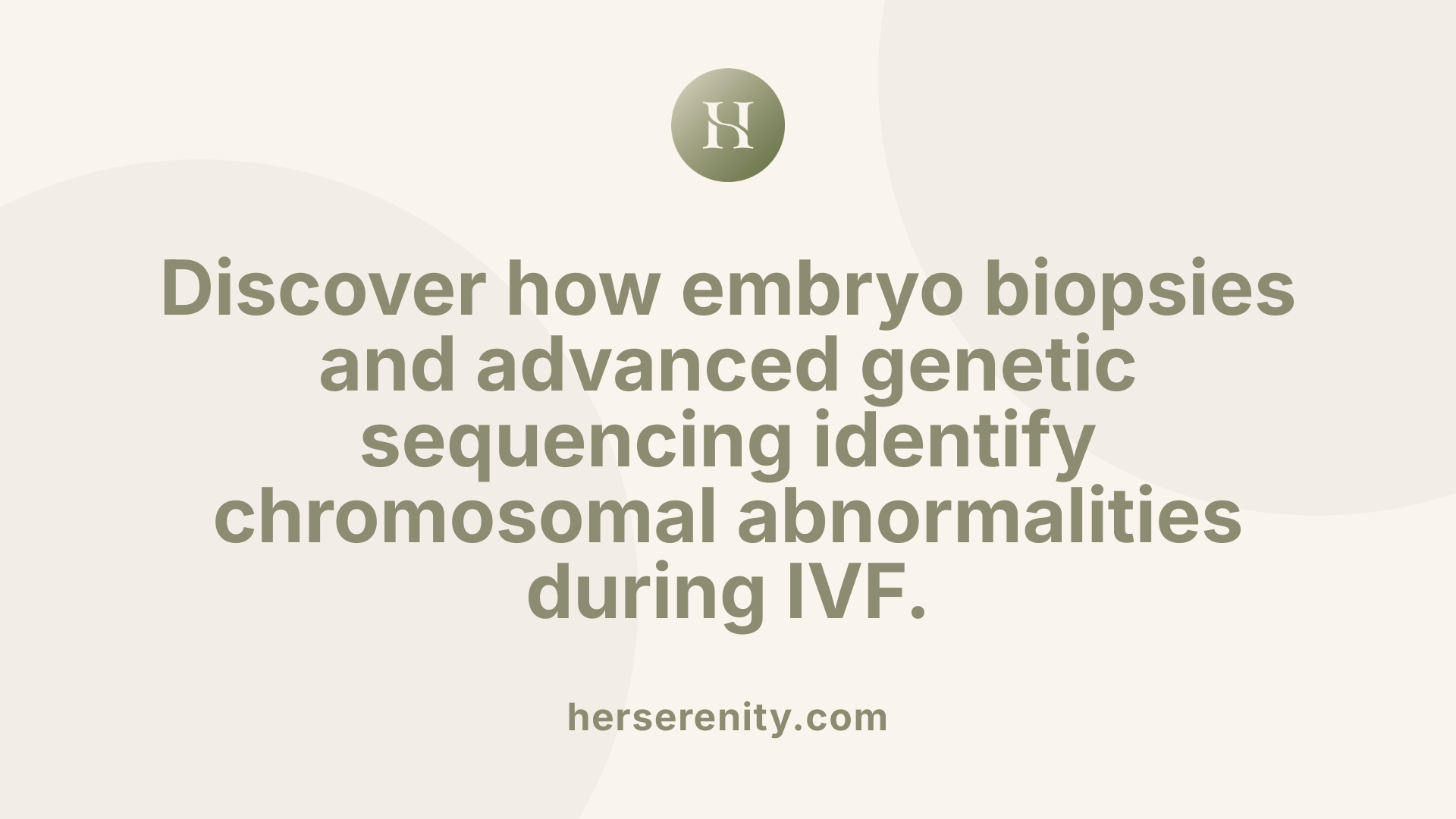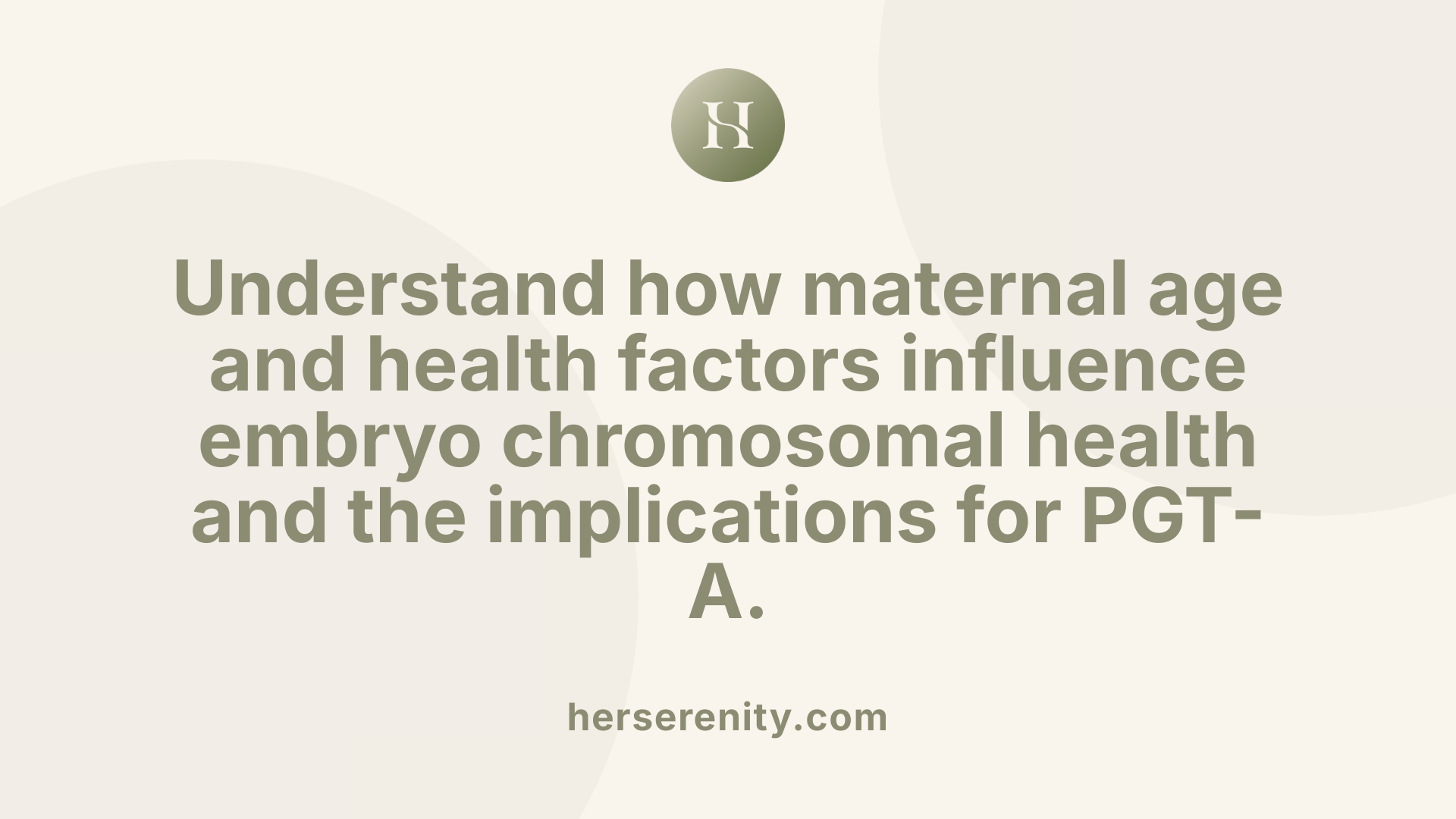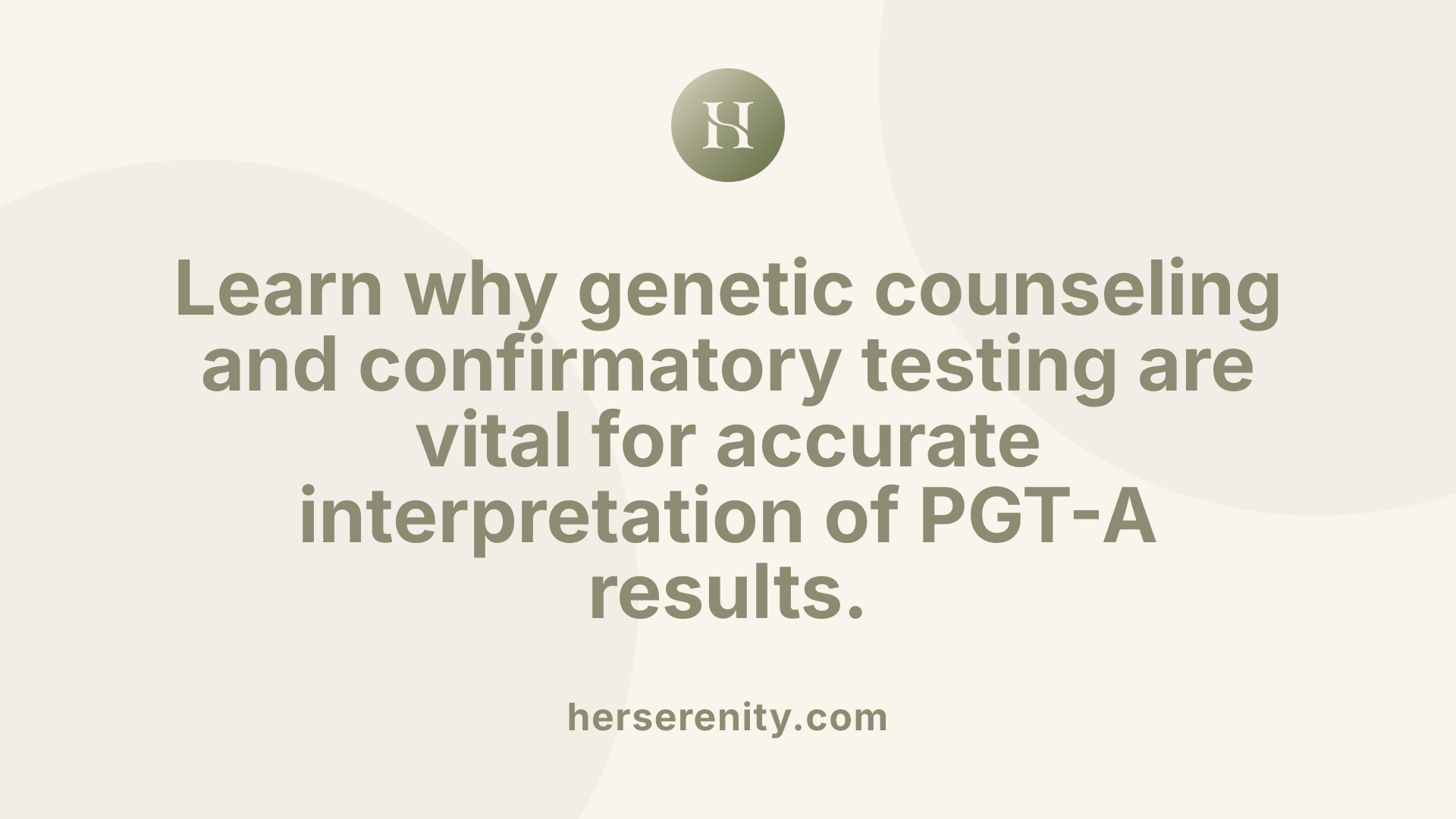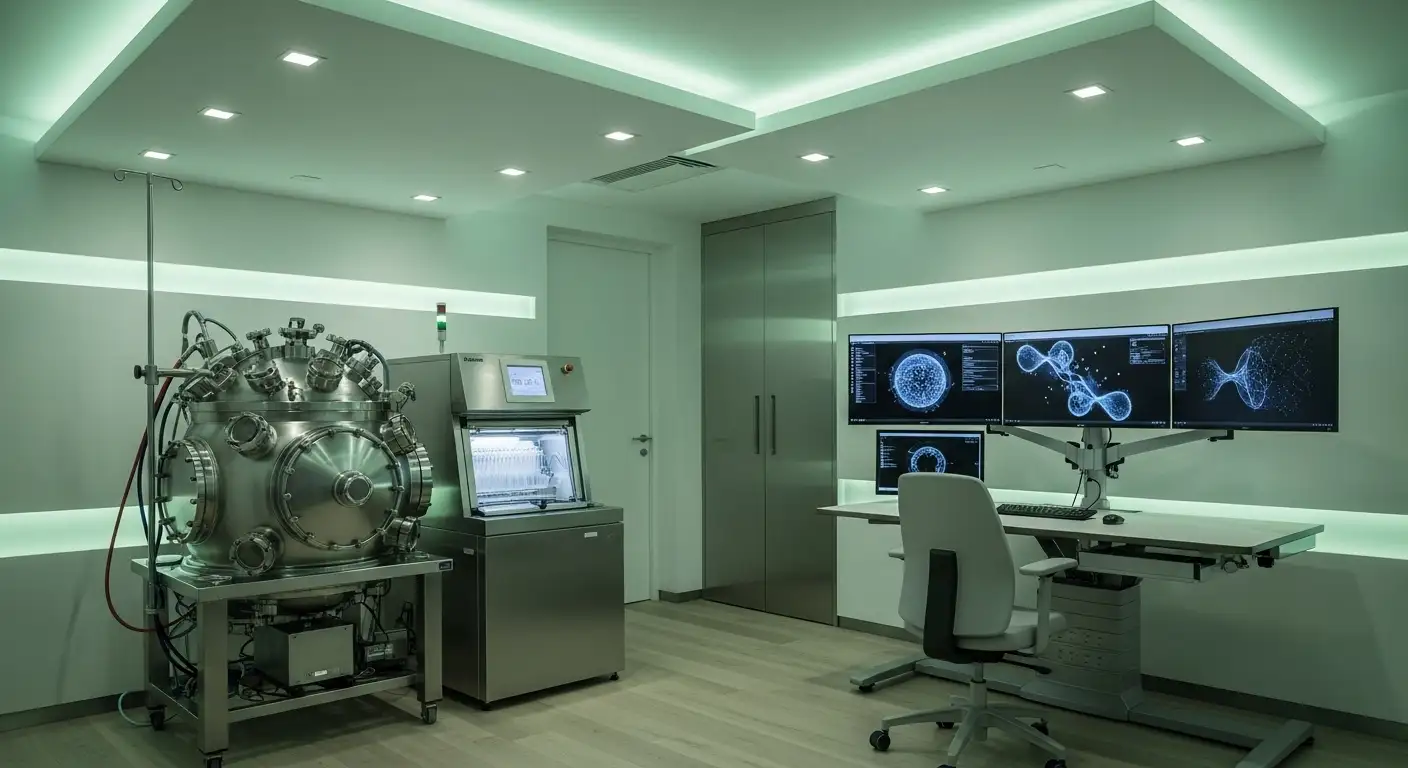When is the right time to use PGT-A testing?
Navigating the Use of PGT-A in Modern IVF Treatments

Understanding PGT-A and Its Place in Fertility Care
Preimplantation Genetic Testing for Aneuploidy (PGT-A) is increasingly used in IVF to screen embryos for chromosomal abnormalities. However, determining when this genetic screening is most beneficial remains a key question for patients and providers alike. This article explores the complexities of PGT-A testing, the scenarios in which it may improve IVF outcomes, and the considerations that should guide its use.
The Basics of Preimplantation Genetic Testing: Types and Purposes
What is preimplantation genetic testing and what types exist?
Preimplantation Genetic Testing (PGT) is a procedure performed during in vitro fertilization (IVF) to analyze embryos for genetic conditions or chromosomal abnormalities before their transfer into the uterus. This testing helps identify embryos with the healthiest genetic makeup to enhance IVF outcomes.
Types of PGT and their differences
PGT is categorized into three main types:
PGT-M (Monogenic disorders): Targets single-gene conditions such as Huntington disease, cystic fibrosis, and fragile X syndrome. It is used when parents carry known pathogenic variants or have a family history of specific genetic diseases.
PGT-SR (Structural rearrangements): Detects chromosomal structural abnormalities like translocations, inversions, deletions, and insertions. This testing helps avoid transmission of unbalanced chromosomal arrangements.
PGT-A (Aneuploidy screening): Screens embryos for whole chromosome abnormalities, including missing or extra chromosomes, which can lead to implantation failure, miscarriage, or developmental issues.
Specific conditions targeted by PGT-M and PGT-SR
PGT-M: Focuses on preventing the transmission of inherited monogenic disorders, which can be severe childhood-onset diseases or adult-onset conditions. Examples include cystic fibrosis, sickle cell anemia, and other Mendelian disorders.
PGT-SR: Recommended for couples with known chromosomal rearrangements, allowing selection of embryos with balanced or normal chromosomal structures.
General objective of PGT-A
PGT-A aims to improve IVF success rates by selecting euploid embryos with the correct number of chromosomes. It helps reduce miscarriage risks and enhances pregnancy chances, especially in women above 35 years or with recurrent pregnancy losses.
| PGT Type | Main Focus | Typical Use Cases |
|---|---|---|
| PGT-M | Single-gene mutation detection | Prevent monogenic disorders |
| PGT-SR | Chromosomal structural issues | Detect and avoid unbalanced chromosomal changes |
| PGT-A | Whole chromosome aneuploidy | Enhance implantation success and reduce miscarriage |
Understanding the distinctions among PGT types helps in choosing the appropriate test aligned with patients’ genetic risks and reproductive goals.
How PGT-A Works: The Process and Technology Behind Aneuploidy Screening

How is PGT-A testing performed and analyzed?
PGT-A testing begins with the biopsy of an embryo during the blastocyst stage, most commonly on Day 5 or Day 6 after fertilization. At this stage, a small group of 5 to 10 trophectoderm cells—destined to become the placenta—is carefully removed for testing. This biopsy is typically conducted using a laser-assisted or no-laser technique to minimize harm to the embryo.
Embryo biopsy timing and method
Choosing Day 5 or Day 6 for the biopsy is critical because embryos at this blastocyst stage have sufficient cells to allow for removal without compromising viability. Research indicates that embryos biopsied on Day 7 may have a lower potential to implant successfully, so Day 5 and Day 6 remain the preferred window.
Use of advanced genetic technologies
The collected cells undergo sophisticated genetic analysis using Next-Generation Sequencing (NGS) or array Comparative Genomic Hybridization (aCGH). These technologies enable comprehensive screening of all 24 chromosomes—including autosomes and sex chromosomes—to detect abnormalities such as missing or extra chromosomes (aneuploidy).
Interpretation of results: euploid, aneuploid, and mosaic
Results from PGT-A categorize embryos into:
- Euploid: Embryos with the normal number of chromosomes, considered suitable for transfer.
- Aneuploid: Embryos with abnormal chromosome numbers, which are linked to implantation failure or miscarriage.
- Mosaic: Embryos containing mixed cell populations, some normal and some abnormal; transfer decisions here require careful genetic counseling due to variable implantation potential.
Laboratory protocols and quality control
PGT-A laboratories adhere to strict protocols involving separate sample handling, comprehensive documentation, and independent result reviews to ensure accuracy. Rigorous quality control safeguards the reliability of these complex genetic tests.
Through this meticulous process, PGT-A provides valuable chromosomal information that can influence embryo selection and improve IVF outcomes in specific patient groups.
The Role of Maternal Age and Other Risk Factors in Aneuploidy

How Does Maternal Age Affect Aneuploidy Rates?
Maternal age is the most significant factor affecting the frequency of aneuploidy in embryos. As women age, particularly beyond 35 years, the likelihood of chromosomal abnormalities in embryos rises sharply. For women over 40, the risk can increase to approximately 75%, making aneuploidy a leading cause of implantation failure and miscarriage in this age group.
What Other Conditions Increase the Risk of Aneuploid Embryos?
Beyond age, specific clinical scenarios also elevate the risk of chromosomal errors. These include a history of recurrent miscarriage, recurrent implantation failure in previous IVF cycles, and severe teratozoospermia (a condition marked by abnormal sperm shape). Such factors compound the risk of passing chromosomal abnormalities to embryos, potentially reducing fertility success.
How Does Aneuploidy Vary Between Younger and Older Women?
Younger women generally exhibit a higher proportion of euploid (chromosomally normal) embryos compared to older women, who tend to have a greater share of aneuploid embryos. This variability affects the success rates of IVF and the necessity for interventions like preimplantation genetic testing for aneuploidy (PGT-A).
How Do These Risk Factors Influence PGT-A Decision-Making?
Patients with advanced maternal age or accompanying risk factors are more likely to benefit from PGT-A screening due to its potential to reduce miscarriage rates and increase implantation success by selecting euploid embryos. However, routine use of PGT-A in all IVF patients is not currently recommended, as evidence does not demonstrate improved outcomes universally across patient groups.
What General Factors Affect Fertility?
Common factors influencing fertility include age-related decline in embryo quality and chromosomal integrity, uterine and ovarian health, sperm quality, and prior reproductive history. Understanding these helps tailor counseling and treatment decisions, including whether genetic testing like PGT-A is advisable.
| Factor | Effect on Aneuploidy | Clinical Consideration |
|---|---|---|
| Maternal Age >35 | Increased aneuploidy rates | Consider PGT-A for improved embryo selection |
| Recurrent Miscarriage | Elevated chromosomal abnormalities | May benefit from PGT-A screening |
| Severe Teratozoospermia | Possible increased embryo aneuploidy | Requires thorough sperm assessment and counseling |
| Younger Age (<35) | Lower aneuploidy incidence | Routine PGT-A not routinely supported |
These factors form the basis for personalized reproductive counseling and guide the appropriate use of genetic testing technologies to optimize IVF outcomes.
Evaluating the Clinical Benefits and Limitations of Routine PGT-A
What does recent research say about pregnancy outcomes with PGT-A?
Multicenter randomized controlled trials have shown no significant difference in pregnancy outcomes between IVF cycles using PGT-A and those using conventional IVF without genetic screening. This suggests that routine application of PGT-A across all patients undergoing IVF may not universally improve success rates.
Can PGT-A improve implantation and reduce miscarriage rates in certain populations?
Evidence indicates that PGT-A may particularly benefit certain groups, such as women aged 38 and older, and those with histories of recurrent miscarriage or implantation failure. These patients often experience improved implantation rates and lower miscarriage risk when PGT-A is applied. However, outcomes vary depending on patient subgroups and testing methodologies.
What challenges affect the accuracy and interpretation of PGT-A results?
PGT-A testing faces challenges including false-positive and false-negative results. Mosaicism—where embryos have a mix of normal and abnormal cells—further complicates diagnosis and clinical decision-making, as it can lead to discarding embryos that may still develop healthily. Current technology like next-generation sequencing improves detection but cannot entirely eliminate the risk of misdiagnosis.
Is there evidence that PGT-A improves neonatal or childhood health?
To date, no conclusive evidence supports the claim that PGT-A directly affects neonatal or longer-term childhood health outcomes. The procedure primarily aims to select embryos with normal chromosomal numbers to improve pregnancy success and reduce miscarriage rather than prevent postnatal health problems.
What are the risks and success rates associated with different fertility treatments?
While PGT-A can improve IVF success rates in women at higher risk of chromosomal abnormalities, routine use for all IVF patients is not strongly supported. Risks include potential misdiagnosis from mosaicism or testing inaccuracies, which might lead to discarding viable embryos. These findings stress the importance of personalized counseling and patient selection to maximize benefits and minimize harm.
Identifying Patient Subgroups That May Benefit Most from PGT-A
Women aged 38 and above
For women aged 38 and older, PGT-A has shown potential in improving clinical outcomes by identifying euploid embryos, which may lead to higher pregnancy rates and lower miscarriage rates. This age group is particularly susceptible to aneuploid embryos due to the natural increase in chromosomal abnormalities with advancing maternal age.
Patients with recurrent miscarriage or recurrent implantation failure
Patients experiencing recurrent miscarriage or repeated implantation failure during IVF cycles may benefit from PGT-A. By screening embryos for chromosomal normalcy, PGT-A can help select embryos with higher implantation potential, thus possibly reducing miscarriage risks.
Cases involving severe male factor infertility
Severe teratozoospermia and other significant male infertility factors are linked with increased rates of chromosomal abnormalities in embryos. In these cases, PGT-A can contribute to better embryo selection to improve IVF success rates.
How individualized assessment informs PGT-A use
Despite some promising evidence, PGT-A is not uniformly recommended for all IVF patients. The decision to use PGT-A is best guided by personalized evaluation considering patient age, reproductive history, and specific infertility causes. Genetic counseling and consultation with healthcare providers ensure that the potential benefits and limitations are clearly communicated, helping to optimize outcomes tailored to each patient's unique circumstances.
The Timing of Embryo Biopsy: Does Day 5 vs. Day 6 Matter?

Comparison of Aneuploidy Rates Between Embryos Biopsied on Day 5 and Day 6
Studies have shown that the timing of the embryo biopsy at the blastocyst stage, typically on Day 5 or Day 6 post-fertilization, does not significantly affect the rates of aneuploidy detected. Both days yield comparable aneuploidy rates, indicating that delaying biopsy by one day does not meaningfully change the genetic profile seen in embryos.
Impact on Implantation Potential and Live Birth Outcomes
Clinical outcomes such as implantation rates and live birth outcomes are also not significantly different between embryos biopsied on Day 5 versus Day 6. This suggests that clinics may have flexibility in scheduling biopsies without compromising embryo viability or the success rates of in vitro fertilization (IVF).
Considerations About Day 7 Blastocyst Biopsies and Reduced Viability
Biopsies performed on Day 7 blastocysts, however, are associated with lower implantation potential than those on Day 5 or Day 6. The extended culture to Day 7 may reflect delayed or impaired embryo development, which is reflected in reduced success rates after transfer.
Technical Aspects of Biopsy Timing on Test Results
Blastocyst biopsy involves sampling 5–10 trophectoderm cells, usually performed on Day 5 or Day 6 when embryos reach good morphological grades (≥4BC). Performing biopsy at these times ensures adequate cell numbers for reliable genetic analysis, such as next-generation sequencing for detecting chromosomal abnormalities. Maintaining standard biopsy timing protocols helps optimize the sensitivity and accuracy of preimplantation genetic testing for aneuploidies (PGT-A).
PGT-A and Embryo Transfer Strategies: Fresh vs. Frozen Cycles
Common practice of cryopreserving embryos after biopsy
In IVF cycles involving PGT-A, embryos are typically biopsied at the blastocyst stage (day 5 or 6) by removing a few trophectoderm cells for genetic testing. After biopsy, embryos are generally cryopreserved (frozen) rather than transferred fresh. This approach allows sufficient time to complete genetic analysis and clinically select the most viable, euploid embryos for transfer.
Comparative success rates of frozen euploid blastocyst transfers vs. fresh transfers
Recent evidence suggests that the transfer of frozen euploid blastocysts following PGT-A is associated with similar or even higher implantation and live birth rates compared to fresh embryo transfers. Freezing embryos permits selection of genetically normal embryos and reduces the impact of ovarian stimulation on the endometrial environment, potentially improving outcomes.
Advantages of single embryo transfer post-PGT-A
PGT-A enables the identification of euploid embryos, which have a higher likelihood of successful implantation and healthy development. This precision supports the recommendation of single embryo transfer, thereby minimizing the risks associated with multiple gestations such as preterm birth and pregnancy complications.
Implications for reducing multiple pregnancy risks
By combining PGT-A with single frozen euploid embryo transfer, clinics can maintain or enhance pregnancy success rates while significantly reducing the incidence of twins or higher-order multiples. This strategy aligns with best practices aimed at optimizing maternal and neonatal health outcomes in assisted reproductive technology (ART).
ART and Conception
In assisted reproduction, PGT-A works alongside IVF by guiding the selection of embryos with normal chromosomal complements. The preference for single frozen embryo transfer after PGT-A supports the goal of achieving healthy pregnancies with the lowest risk profile for mothers and infants.
Balancing Expectations: Genetic Counseling and Follow-Up After PGT-A

Why is genetic counseling crucial before and after PGT-A?
Genetic counseling plays a pivotal role in the PGT-A process. Before testing, counseling helps patients understand the benefits, risks, and limitations of the test, enabling informed decisions based on their personal and familial health history. After receiving results, counseling supports interpretation, especially when outcomes are complex, such as in cases of mosaic embryos.
What are the limitations of PGT-A and risks of false results?
PGT-A screens embryos for chromosomal abnormalities but cannot guarantee a genetically healthy baby. False-positive and false-negative results may occur, meaning euploid embryos might still carry undetected issues, or embryos labeled as abnormal might be viable. Hence, caution is advised when making clinical decisions solely on PGT-A results.
Why is confirmatory prenatal diagnostic testing recommended?
Due to the inherent limitations of PGT-A, follow-up prenatal diagnostic testing, such as chorionic villus sampling (CVS) or amniocentesis, is recommended. These tests provide definitive genetic diagnosis during pregnancy, helping to confirm PGT-A findings and detect abnormalities that PGT-A might miss.
How are mosaic embryos handled and what ethical factors are involved?
Mosaicism—embryos containing both normal and abnormal cells—complicates embryo selection. Advances in genetic testing enable detection of mosaic embryos, which might still have implantation potential. With appropriate genetic counseling, some mosaic embryos can be considered for transfer. Ethical considerations include transparency in counseling about risks and uncertain outcomes, respecting patient autonomy, and balancing potential benefits against risks.
This integrated approach combining genetic counseling, careful interpretation, and confirmatory testing ensures responsible use of PGT-A within IVF treatment plans.
Lifestyle and Medical Factors Influencing Fertility and Necessity of PGT-A
What lifestyle changes can improve reproductive health and increase chances of conception?
Maintaining healthy lifestyle habits plays an essential role in enhancing fertility. Women and men aiming to conceive are encouraged to preserve an optimal body weight through balanced nutrition and regular physical activity. Avoiding smoking, alcohol excess, and environmental toxins reduces potential harm to reproductive cells and improves the chances of successful conception.
Appropriate timing of intercourse aligned with the ovulation cycle maximizes natural fertility potential. These preventive measures not only support reproductive health but also may impact decisions around medical interventions like preimplantation genetic testing for aneuploidy (PGT-A).
Broad factors affecting fertility such as age, lifestyle, and medical conditions
Age remains a primary determinant of fertility and chromosomal normalcy in embryos, with women over 35 facing increased risks of aneuploidy. Medical conditions such as recurrent miscarriages, implantation failure, and severe male factor infertility can also contribute to reduced fertility outcomes. Lifestyle factors interwoven with these medical risks influence overall embryo viability.
How these may intersect with indications for PGT-A
PGT-A screening is frequently considered for patients with advanced maternal age or those experiencing recurrent pregnancy loss, aiming to identify euploid embryos to improve implantation rates and reduce miscarriage. Lifestyle improvements can potentially improve baseline fertility, thereby impacting the necessity and timing for PGT-A.
Preventive lifestyle modifications versus medical and technological interventions
While lifestyle modifications are foundational and can optimize natural and assisted reproductive success, they do not eliminate chromosomal abnormalities. Thus, medical and technological interventions like PGT-A serve as adjunct tools, especially for at-risk populations, to enhance success rates of IVF.
Comprehensive fertility assessment guiding testing decisions
A thorough evaluation encompassing medical history, reproductive health, age, and lifestyle factors is critical to individualized counseling on the use of PGT-A. This comprehensive approach ensures that genetic testing is employed judiciously alongside lifestyle and medical management to maximize fertility outcomes.
Current Challenges and Future Directions in PGT-A Research and Application

Mixed data on embryo viability after multiple biopsies and vitrification
The impact of performing multiple rounds of embryo biopsy and cryopreservation through vitrification on embryo viability remains unclear. Some studies report that these procedures might reduce viability, potentially affecting implantation and pregnancy success. However, other data show minimal or no impact, reflecting significant variability in outcomes. Further rigorous research is necessary to establish the safety profile of repeated embryo manipulations.
Emerging technologies improving detection and interpretation of mosaicism
The advent of next-generation sequencing (NGS) has enhanced the ability to detect mosaicism—embryos containing both normal and abnormal cells—with greater accuracy. Although mosaic embryos represent up to 20-30% of cases and present unique challenges for selection, advances in genetic testing technology now provide more nuanced information. This improvement facilitates informed decision-making but also introduces complex interpretation requirements and ethical considerations.
Research gaps about patient subgroup benefits and long-term outcomes
While public data indicate PGT-A may reduce miscarriage rates and improve implantation rates, especially for women above 38 years, benefits vary among patient subgroups. Additionally, studies show no conclusive evidence that PGT-A influences neonatal or childhood health outcomes. Clarifying which specific patients gain the most advantage and understanding long-term safety remains a priority area for future research.
Considerations before adopting PGT-A as routine clinical practice
Despite its increased use—from 14% to 44% of IVF cycles in the US between 2014 and 2019—routine screening with PGT-A for all IVF patients is not currently endorsed. This cautious approach arises from inconsistent evidence on improved clinical outcomes compared to conventional IVF and the procedural complexities involved. PGT-A application should be personalized, emphasizing thorough genetic counseling and consideration of individual reproductive goals and risks.
Integrating PGT-A into the Broader Spectrum of Fertility Treatments
What are the common medical treatments available to assist individuals and couples with conception and reproductive health?
Fertility treatments encompass a wide range of medical interventions designed to aid conception. Among these, in vitro fertilization (IVF) combined with intracytoplasmic sperm injection (ICSI) is a major assisted reproductive technology (ART). Preimplantation genetic testing for aneuploidy (PGT-A) is integrated as an optional component within IVF cycles, primarily aimed at screening embryos for chromosomal abnormalities before transfer.
PGT-A involves biopsying embryos, most commonly at the blastocyst stage (day 5 or 6), to evaluate chromosomal integrity. This helps identify euploid (chromosomally normal) embryos which may have higher implantation potential and lower miscarriage risk. However, the use of PGT-A is not a routine recommendation for all IVF patients, as evidence supporting universal benefits remains inconclusive.
Cost considerations and treatment planning implications
The addition of PGT-A to IVF cycles increases the overall cost due to genetic testing, embryo biopsy, and associated laboratory analyses, which are billed separately from standard IVF procedures. Given the variable clinical benefits based on patient age and reproductive history, it is important for treatment plans to weigh potential advantages against financial implications. Furthermore, embryo biopsy necessitates cryopreservation of embryos, which may influence treatment timelines and protocols.
Collaborative decision-making involving clinicians and genetic counselors
Optimal integration of PGT-A requires a multidisciplinary approach. Fertility specialists evaluate medical indications and reproductive goals, while genetic counselors provide detailed information about the test’s limitations, potential outcomes—including mosaicism—and the necessity for follow-up prenatal diagnosis. This collaboration supports informed consent and personalized recommendations.
Clinical guidelines recommending selective use rather than routine application
Current evidence from randomized trials does not support the routine use of PGT-A in all IVF patients. Instead, guidelines suggest selective application in specific populations, such as women of advanced maternal age, those with recurrent implantation failure, or recurrent miscarriages. The evolving nature of PGT-A technology and interpretation calls for ongoing research and cautious clinical adoption.
Finding the Right Moment for PGT-A in IVF
While PGT-A offers promising tools to enhance IVF success by identifying chromosomally normal embryos, its routine use for all patients is not currently supported by robust evidence. Ideal candidates often include older women and those with specific fertility challenges such as recurrent pregnancy loss or severe male infertility. Comprehensive counseling, ethical considerations around mosaic embryos, and confirmatory prenatal testing remain essential for responsible use. Ongoing research will continue to clarify the best practices and patient groups who stand to benefit most from this technology, ultimately guiding clinicians and patients in tailoring fertility treatments for optimal outcomes.
References
- The use of preimplantation genetic testing for aneuploidy
- Preimplantation Genetic Testing
- Preimplantation genetic testing guidelines of International .. ...
- Genetic Testing (PGT & PGS) | UCSF Center for Reproductive ...
- How & When is PGT Performed - RGI
- What is PGT-A? And How Does It Support IVF?
- Indications and management of preimplantation genetic ...
- PGT-A preimplantation genetic testing for aneuploidies and ...
- Assisted Reproductive Technology | IVF
- What Is Assisted Reproductive Technology (ART)?


































































































